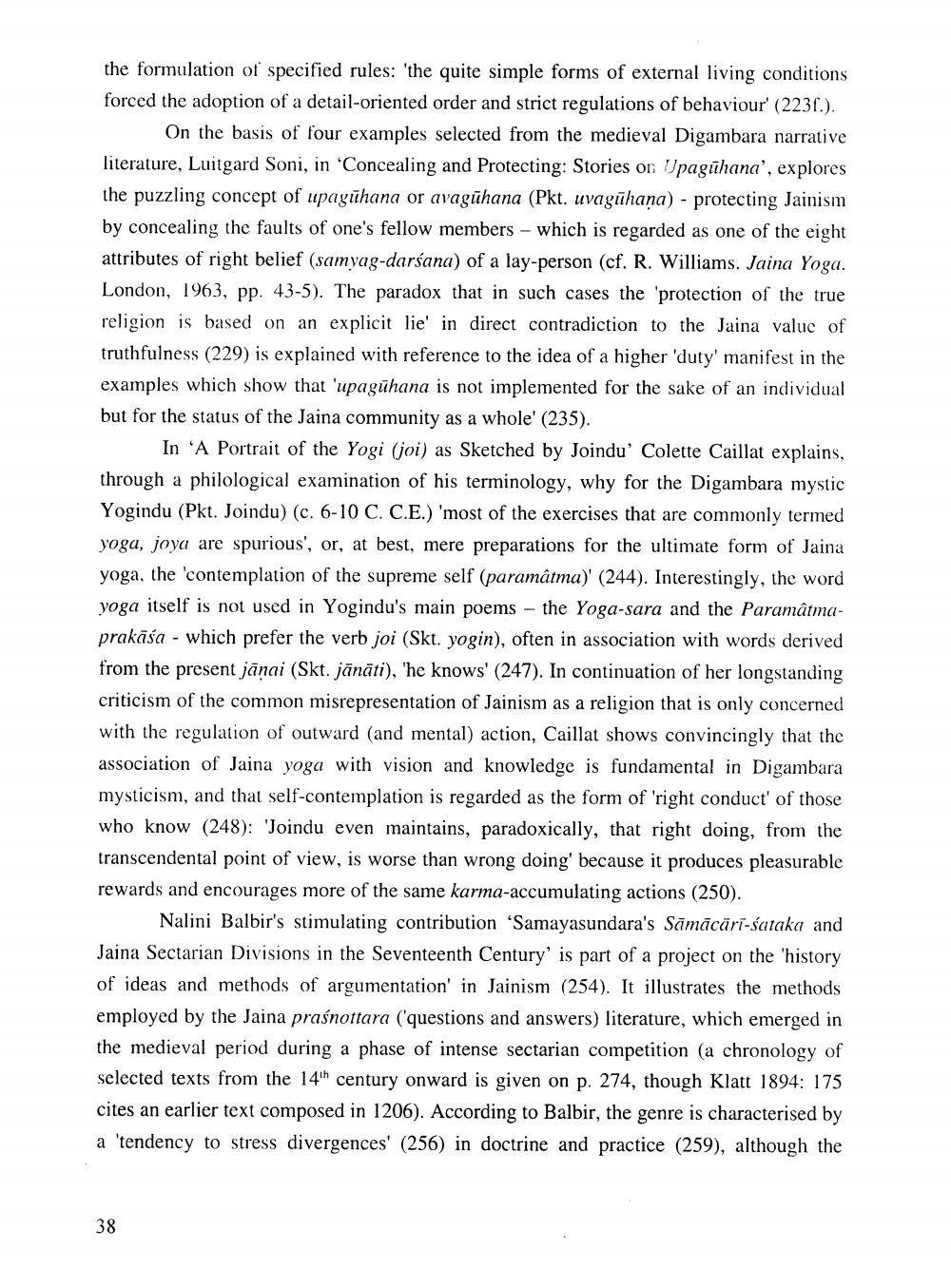________________
the formulation of specified rules: 'the quite simple forms of external living conditions forced the adoption of a detail-oriented order and strict regulations of behaviour' (2231.).
On the basis of four examples selected from the medieval Digambara narrative literature, Luitgard Soni, in 'Concealing and Protecting: Stories on Upagūhana', explores the puzzling concept of upagūhana or avagūhana (Pkt. uvagūhana) - protecting Jainism by concealing the faults of one's fellow members - which is regarded as one of the eight attributes of right belief (samyag-darśana) of a lay-person (cf. R. Williams. Jaina Yoga. London, 1963, pp. 43-5). The paradox that in such cases the 'protection of the true religion is based on an explicit lie' in direct contradiction to the Jaina value of truthfulness (229) is explained with reference to the idea of a higher 'duty' manifest in the examples which show that 'upagühana is not implemented for the sake of an individual but for the status of the Jaina community as a whole' (235).
In A Portrait of the Yogi (joi) as Sketched by Joindu Colette Caillat explains, through a philological examination of his terminology, why for the Digambara mystic Yogindu (Pkt. Joindu) (c. 6-10 C. C.E.) 'most of the exercises that are commonly termed yoga, joya are spurious', or, at best, mere preparations for the ultimate form of Jaina yoga, the 'contemplation of the supreme self (paramâtma)' (244). Interestingly, the word yoga itself is not used in Yogindu's main poems - the Yoga-sara and the Paramâtmaprakāśa - which prefer the verb joi (Skt. yogin), often in association with words derived from the present jānai (Skt. jānāti), 'he knows' (247). In continuation of her longstanding criticism of the common misrepresentation of Jainism as a religion that is only concerned with the regulation of outward (and mental) action, Caillat shows convincingly that the association of Jaina yoga with vision and knowledge is fundamental in Digambara mysticism, and that self-contemplation is regarded as the form of 'right conduct' of those who know (248): 'Joindu even maintains, paradoxically, that right doing, from the transcendental point of view, is worse than wrong doing' because it produces pleasurable rewards and encourages more of the same karma-accumulating actions (250).
Nalini Balbir's stimulating contribution 'Samayasundara's Sāmācāri-sataka and Jaina Sectarian Divisions in the Seventeenth Century' is part of a project on the 'history of ideas and methods of argumentation' in Jainism (254). It illustrates the methods employed by the Jaina praśnottara ('questions and answers) literature, which emerged in the medieval period during a phase of intense sectarian competition (a chronology of selected texts from the 14th century onward is given on p. 274, though Klatt 1894: 175 cites an earlier text composed in 1206). According to Balbir, the genre is characterised by a 'tendency to stress divergences' (256) in doctrine and practice (259), although the
38




